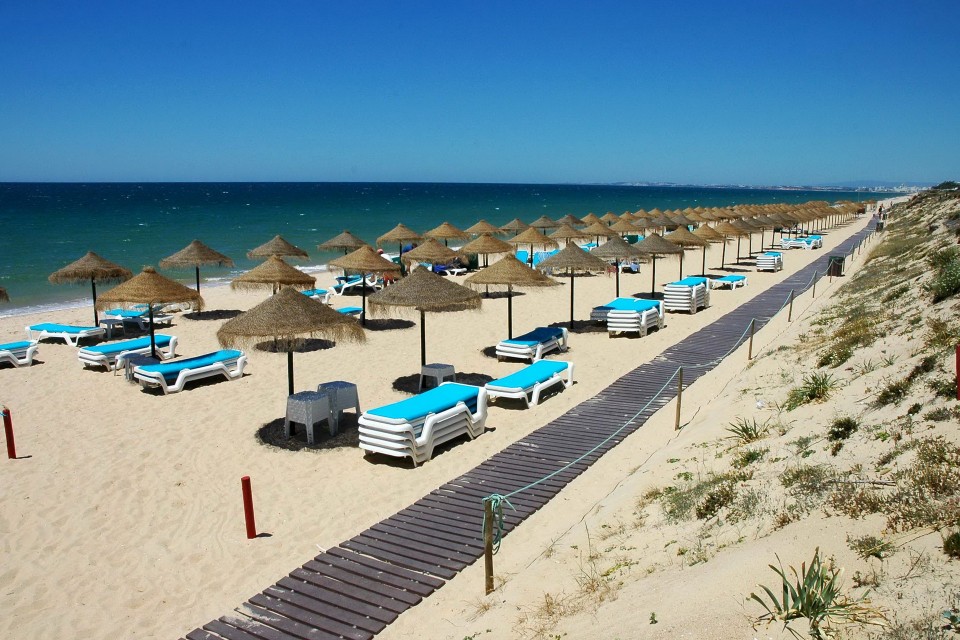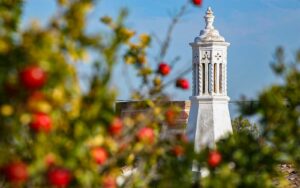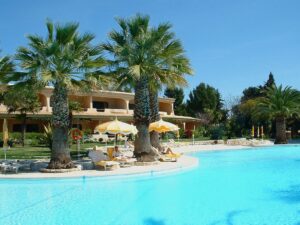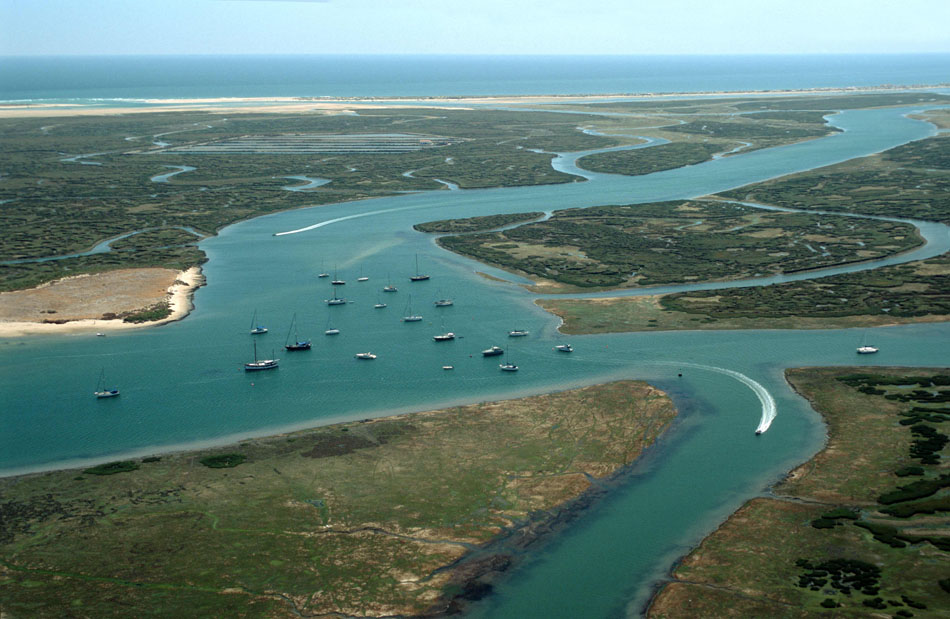
The Ria Formosa Natural Park stretches for close to 60 kilometers (nearly 40 miles) along the southeastern coast of Portugal, from Faro to Cacela Velha. It’s a maze of islands, sandbars, lagoons, canals, and marshes that change size and shape depending on the currents and tides. It’s a natural wonder that no visitor to the Algarve should miss. It can be achieved by public ferries and tourist boats.
There are six barrier islands and a peninsula in total there, with wonderful white sand beaches, some of them completely deserted. The designation as a natural park means that it’s protected from developments. The beaches there are heaven for those who prefer peace and quiet, and there are spots officially recognized as nude beaches. On the way there, it’s possible to see a variety of wildlife, including chameleons, the world’s largest concentration of seahorses, flamingos, storks, and migratory birds, among others.
A native of these shores is the Portuguese Water Dog, a rare breed that became famous when U.S. President Obama chose it for the family dog in the White House, allegedly for its non-shedding qualities.
If you want to learn more about this breed and the natural park, you must go to the Ria Formosa Natural Park Interpretation Center in Olhão. The site, located at Quinta de Marim, suffers from some neglect, but has 3 kilometers (almost 2 miles) of paths and boardwalks, allowing visitors to observe a variety of animal species. It also preserves an archeological site dating back to Roman times (4th century), and a mansion with exhibitions about environmental protection.

Beaches in the Ria Formosa Natural Park
The beaches on the islands are the most popular destinations in the park, and the main gateways are the cities of Faro, Olhão, and Tavira. On their piers, you can hop on tourist boats for tours around the park or take a ferry directly to the beaches.
Praia de Cacela Velha
The beach on the eastern end of the Ria Formosa Natural Park is on a peninsula and island by one of Algarve’s best-preserved villages. Accessed by boat at high tide or on foot from the village at low tide, it stretches for about 2 kilometers (over one mile) and has shallow and calm waters. International publications have ranked it among the world’s and Europe’s best beaches, but fortunately, it has been able to escape mass tourism.
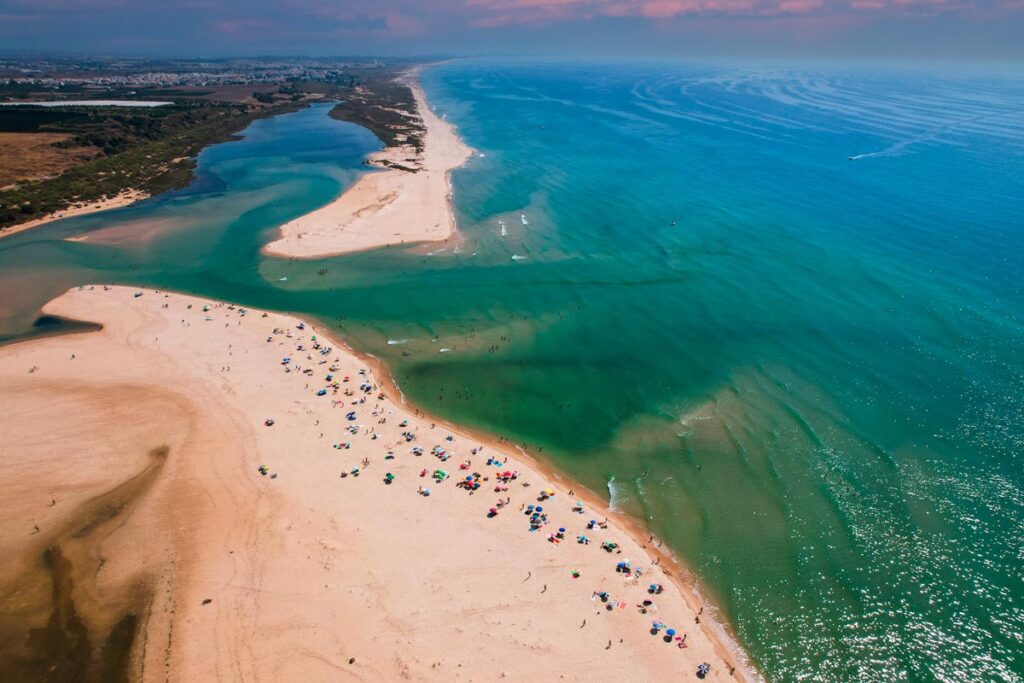
Ilha de Cabanas de Tavira
The 7 km-long (4 miles) beach of an island between Cacela Velha and the town of Tavira can be reached by boat from the fishing village of Cabanas de Tavira. Because it’s so long, it offers plenty of space and tranquility and is almost deserted. It has just one restaurant and loungers and wicker parasols for rent in the center of the island, but most of the beach is long stretches of dunes. As you cross the lagoon on your way there, you can spot a variety of wildlife.
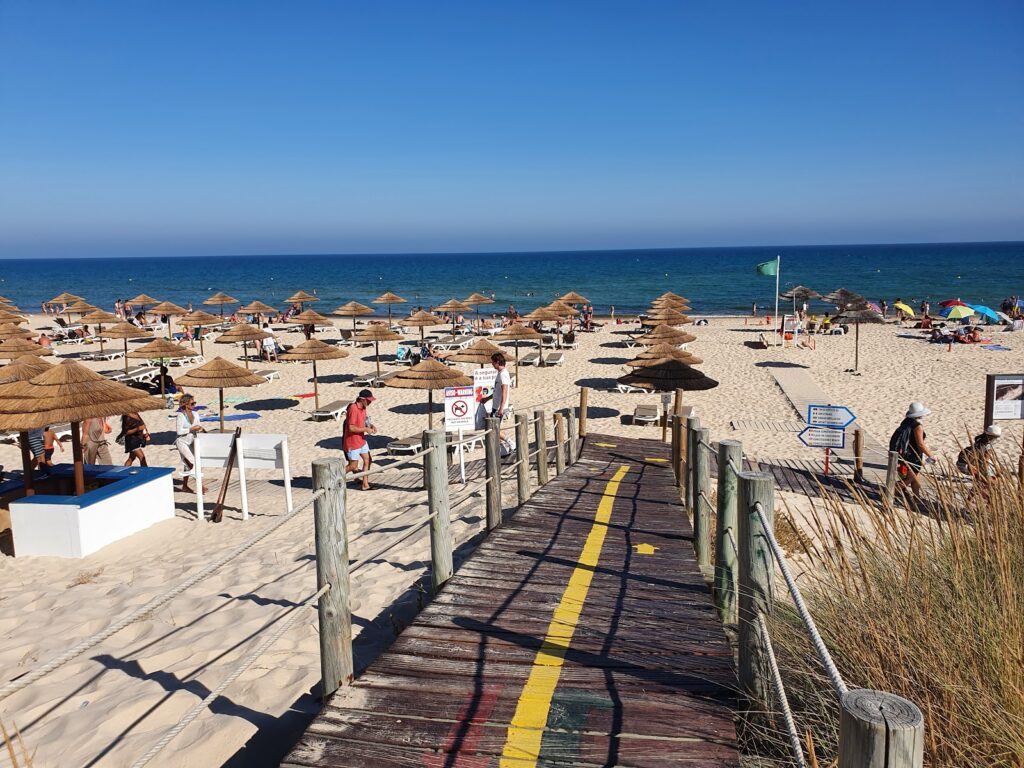
Praia da Ilha de Tavira
The big but uninhabited island of Tavira is divided into four beaches, and this one is the easiest to reach from the center of town. There’s a regular ferry, which takes you to a pier by a pine forest which you must cross to reach the beach. It attracts families due to its accessibility and variety of restaurants with outdoor seating, plus its volleyball nets. However, keep walking to the right (when facing the sea) and it becomes a deserted island where some people find enough space and privacy to sunbathe nude.

Praia da Terra Estreita
The second beach on the island of Tavira can be reached on a long walk from Praia da Ilha de Tavira or by boat from Santa Luzia, a small fishing village to the west of Tavira. Backed by dunes with Mediterranean vegetation, it’s on the narrowest part of the island. It has a bar and a few loungers and parasols for rent but hasn’t yet been discovered by many tourists.
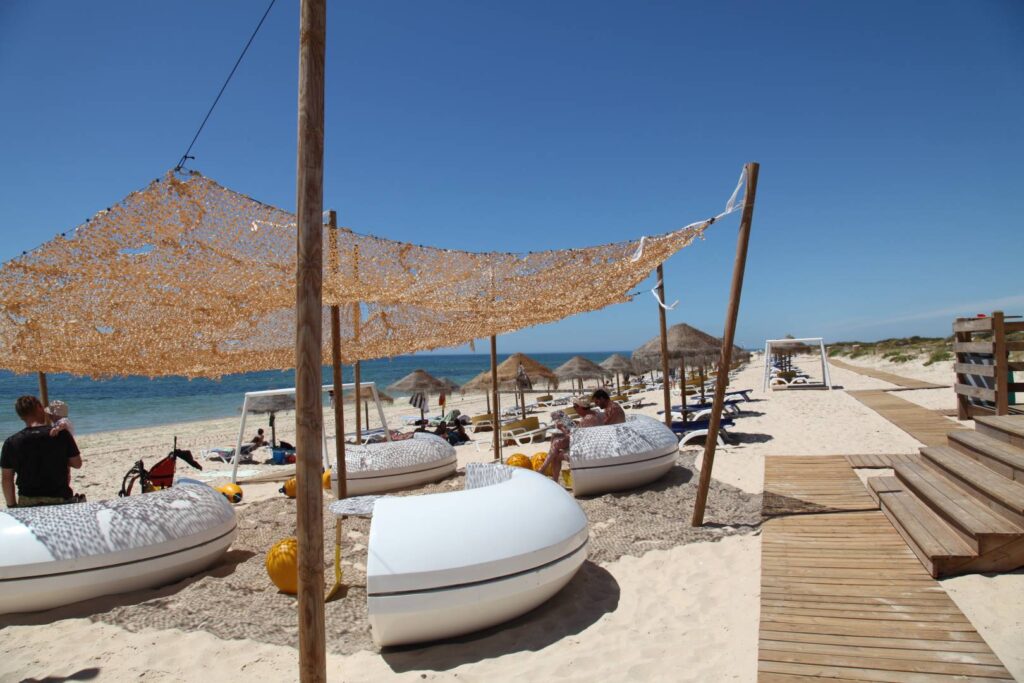
Praia do Barril
Until the second half of the 20th century, this part of the island of Tavira was where a small fishing community lived throughout much of the year. When the fishing industry declined, its abandoned homes were turned into restaurants, and then came the tourists. Most arrive on a charming old train originally used by the fishermen to cross a path that connects the island to the mainland, over a lagoon of the Ria Formosa Natural Park. Also left behind by the fishermen were dozens of anchors that secured nets and are now on display on the dunes as reminders of the fishing heritage.

Praia do Homem Nu
Keep walking west (to the right when facing the sea) from Praia do Barril, and the island becomes one long desert. In about 15-20 minutes you’ll find yourself all alone at this official nude beach. Because it can only be reached on foot from the neighboring beach, it’s one of Algarve’s quietest beaches. It’s the western end of the island, and on the very end, you’ll find a small lagoon and can see the neighboring island of Fuseta.
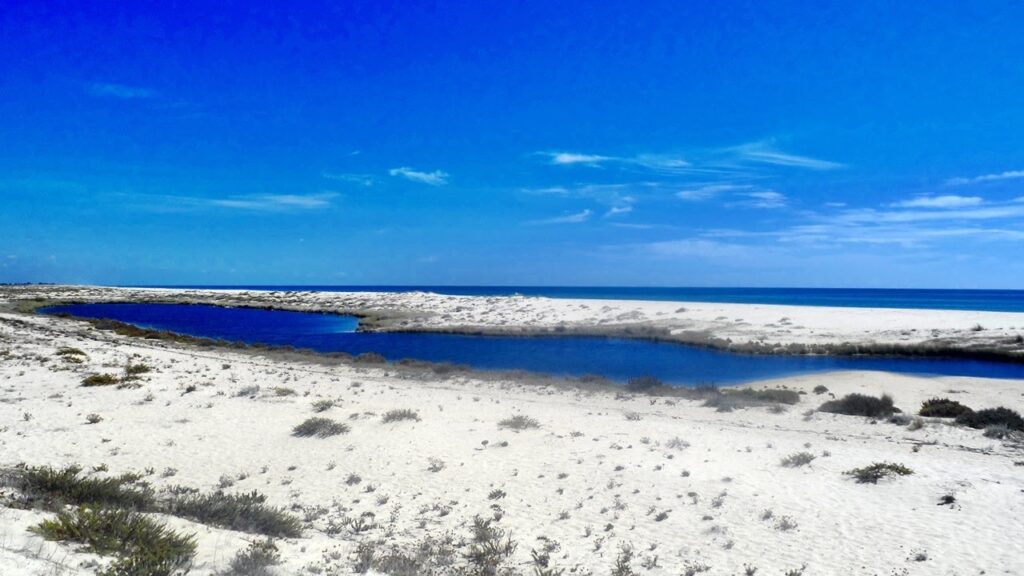
Ilha da Fuseta
Armona Island is often called Fuseta Island on its eastern end. That’s because this site is reached by boat from the fishing village of Fuseta. Mostly frequented by locals, it’s a well-kept secret place despite being one of the Algarve’s best and most beautiful beaches. When you arrive, keep walking east (to the left) for the more peaceful side, with shallow, calm, and clear waters that will make you picture yourself in the Maldives. Just keep the secret to yourself!

Ilha da Armona
Accessed by ferry from the town of Olhão, this is a 9 km-long (6 miles) island inhabited by a small fishing community. The ferry arrives on the western end, by the village, and to reach the beach you have to go down the main street and follow a long boardwalk over the dunes. Most people stay in the area at the end of the boardwalk, to be close to the restaurants and the ferry, but if you prefer quieter beaches, keep walking to the left. After a few minutes, you’ll see nothing but white sand stretching as far as the eye can see. Because so few people come this far, it’s an unofficial nude beach. There’s nothing but unspoiled nature around you, and you’ll just have a few chameleons and birds for company.
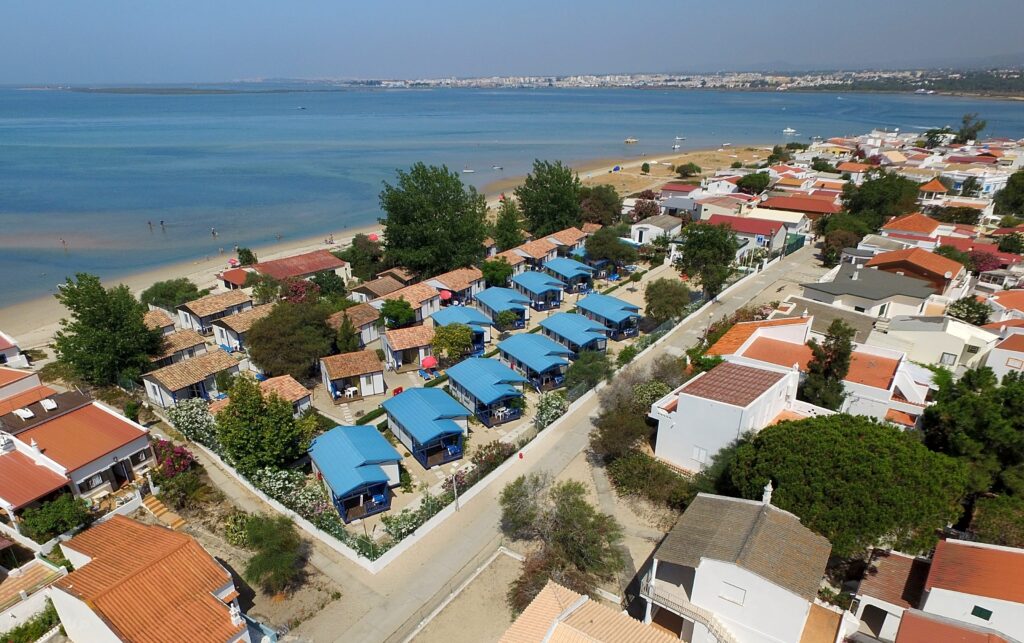
Ilha da Culatra
The island to the west of Armona also has two names – Ilha da Culatra in the east and Ilha do Farol in the west. Culatra is a small fishing community with about 1,000 residents, and although its beach is a popular destination for the people of Faro and Olhão, it’s never crowded. In fact, if you keep walking east (to the left) when you arrive, it’s nearly deserted. The sea is usually calm and you just might spot a few dolphins in the distance.
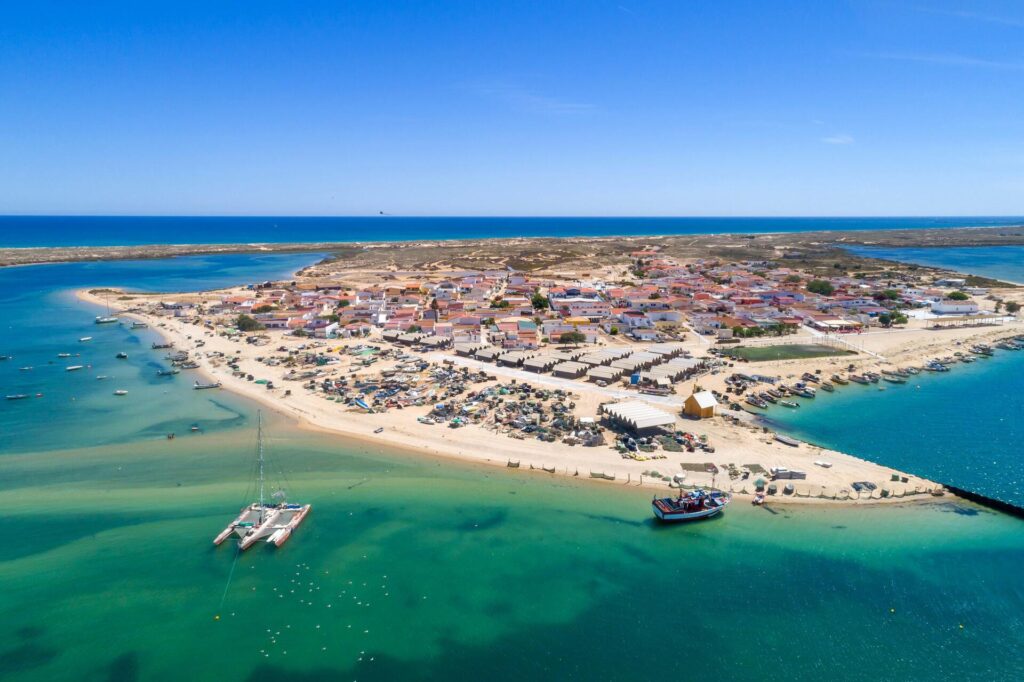
Ilha do Farol
Named after a 19th-century lighthouse, this part of the island between Faro and Olhão also has a tiny fishing village. Walk through the village, past a number of restaurants offering grilled fish, in the direction of the lighthouse, and you arrive at the beach. In the area by the lighthouse you have wicker parasols and water sports equipment for rent, so it’s where most people stay. For a quieter spot, keep walking east and you’ll have the beach all for yourself.
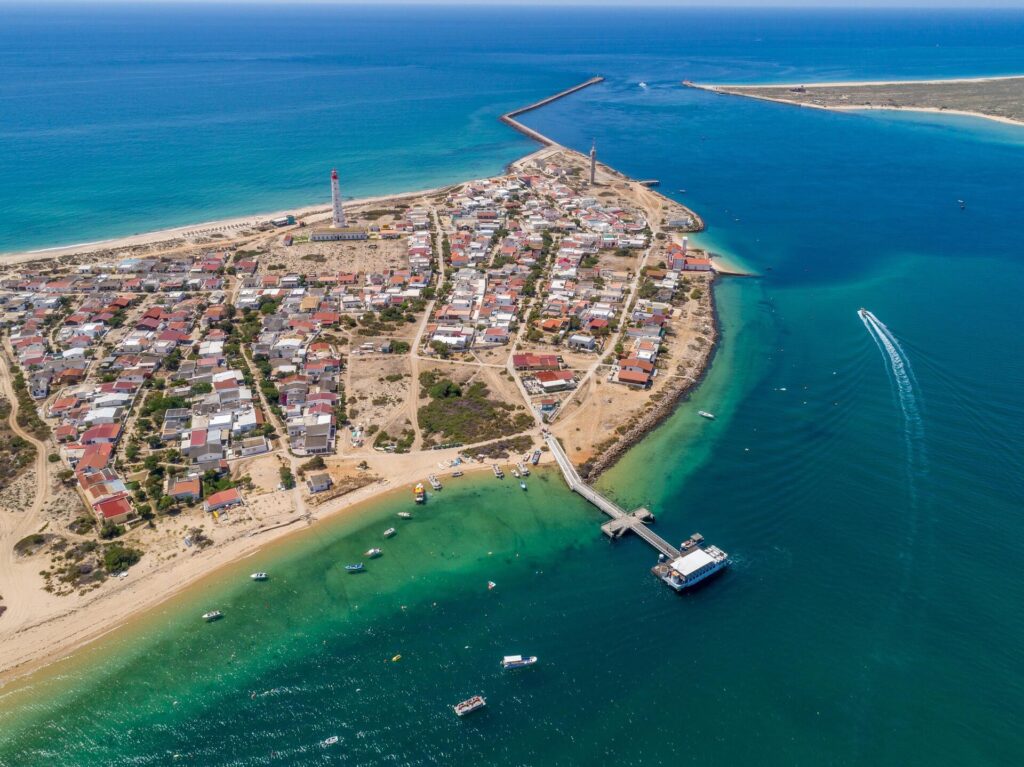
Ilha Deserta
There is just a small lighthouse, a few sheds by the pier, and a restaurant on this island. It’s a literally deserted island, with a magnificently pristine landscape that can be admired from a 2 km-long boardwalk over dunes. This is Portugal’s southernmost tip and its beach is divided into an official nude beach on the western side and an area covered with parasols and loungers for rent on the eastern end. The northern side of the island, facing the city of Faro, has the calmest waters.

Ilha de Faro
It’s not really an island, but a peninsula. Because it’s so easy to reach from Faro, it’s the most crowded beach in the Ria Formosa Natural Park. It’s also the most developed beach with villas, restaurants and cafés. Follow the boardwalk to the east for the undeveloped, uncrowded, and much more pleasant and attractive side of the beach. The waves here attract surfers, but to the north, you have the calmer waters of a lagoon.

Praia da Quinta do Lago
Quinta do Lago is one of Algarve’s luxury resorts. Never crowded, its beach is reached via a footbridge over a lagoon and has a rather exclusive atmosphere, due to the 5-star resorts and world-class golf courses nearby. The so-called “São Lourenço Trail” takes you past pinewoods, lagoons, and marshes, allowing you to observe different bird species and breathe in the fresh air of the park.
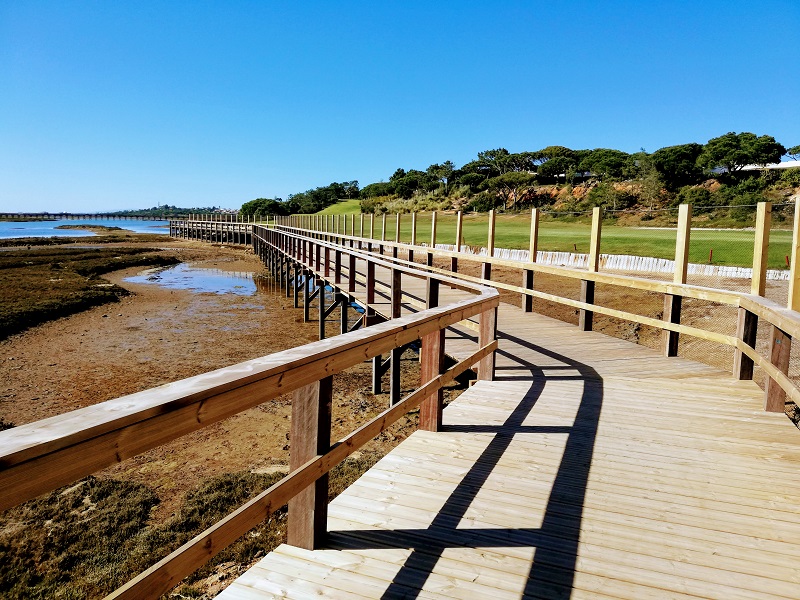
Praia do Ancão
This beach marks the western end of the Ria Formosa Natural Park. It has a natural landscape of pinewoods and dunes that are protected by boardwalks connecting it to Quinta do Lago. Follow the boardwalks to observe a variety of flora and fauna, including different species of birds. The beach is known as a favorite of Portuguese celebrities, who want to escape the crowds and enjoy meals with sea views at the two restaurants elevated over the dunes.
